Every day when Masrat Jan finishes her household chores, she enters her workshop, sits on a custom-made low stool, and picks up her brushes. In her 50s, Jan, a well-known papier-mache artist living in the congested Lal Bazar neighbourhood of Srinagar, Kashmir, says that the artifact she is working on will be completed in a week.
In the mundane environs, the colorful place has given her life meaning as she sits surrounded by polished artifacts of all hues, enamel bottles, and brushes.
“This art gives me solace. It was brought to us by our elders and Sufi saints. More than earning, I do it out of reverence.”
Masrat Jan
Jan dips her brush in a watercolor and starts creating circular designs on a white ball made of paper pulp.
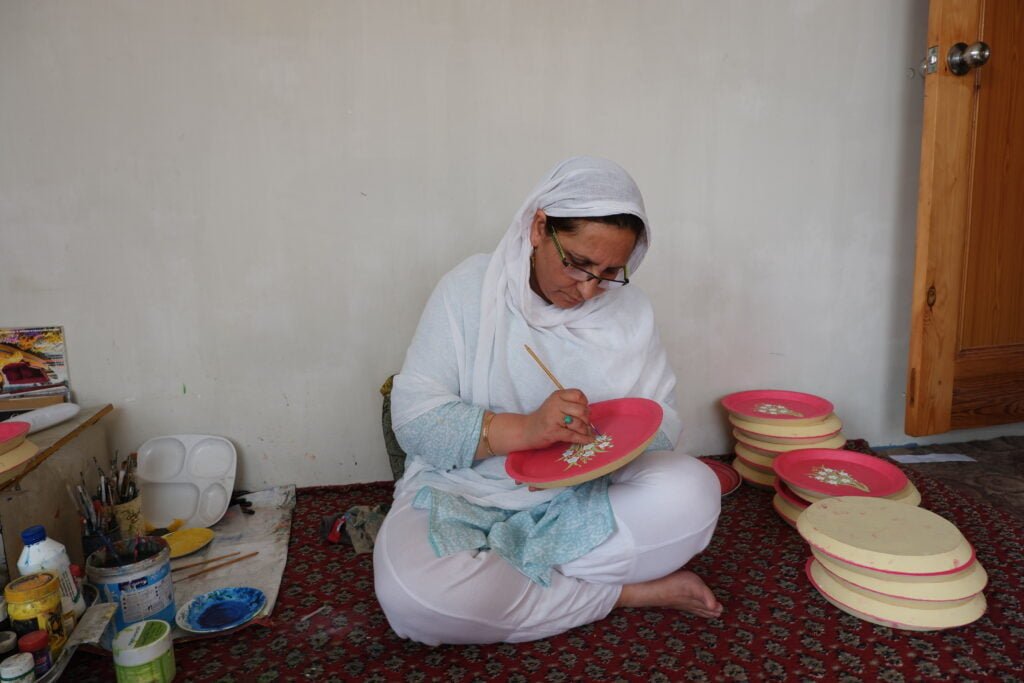
“This art gives me solace. It was brought to us by our elders and Sufi saints. More than earning, I do it out of reverence,” she says as she sat cross-legged inside her workshop hosting multiple papier mache products such as flower vases and pencil holders.
Papier mache involves making of different shapes like vases, trays, boxes and animal shapes by applying paper pulp over moulds, then drying those objects, polishing them, and finally painting them intricately with multiple hues.
The craft like many other handicrafts like shawl weaving, embroidery is believed to have entered Kashmir with the advent of Islam in the 14-15th century as historians say papier mache was introduced from Persia during the reign of Kashmiri King, Sultan Zainul Abidin.
Masrat Jan and her acquaintance with Papier Mache
It was in her teenage years that Jan developed an interest in papier mache from her grandfather. “It took me seven years to learn the craft,” says Jan as she gave us a peek into her childhood.
“My father did not belong to the papier mache family but my mother belonged to it and I consider myself lucky that my grandfather was a celebrated artist and passed on his skills to me,” she adds after a brief pause.
Papier Mache is mostly done by men in the Muslim-majority region while women mostly do needlework and embroidery on shawls and suits.
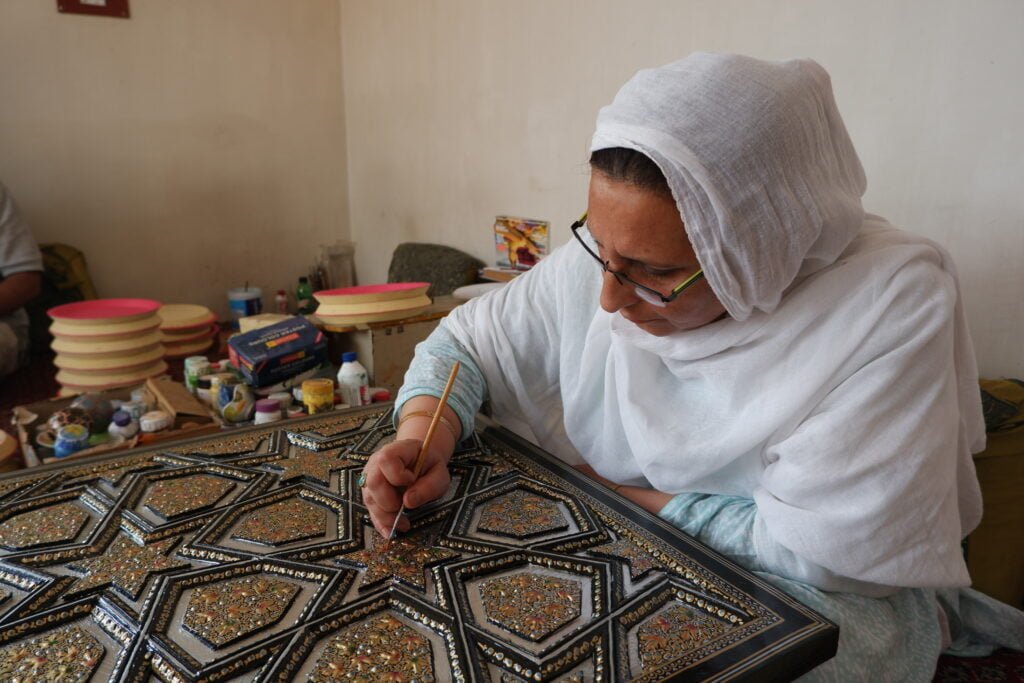
Jan says with the passage of time she earned a name for herself in this male-dominated art by earning several state awards.
“The credit goes to my grandfather for honing my skills” Jan says, adding, that later on she got married to a family of Papier Mache artisans. “I took advantage of being married to a prominent and award-winning artist who supported me all the time,” she says.
In a conservative society like Kashmir, Jan too faced challenges. Still, she never gave up her dream of being a master craftswoman.
Also read: A Needle With A Point: Singhleton Is Stitching Stories Of Dissent
She says that her husband was a pillar of strength whenever she struggled to manage the household chores and professional requirements together. “As a woman, it was a challenging task and fortunately I managed to do everything I desired” Jan says.
Jan says that Papier Mache is declining in the region and she aims to revive the centuries-old extinct art. She has started assembling many young girls and women from different parts of the capital city Srinagar to join the industry.
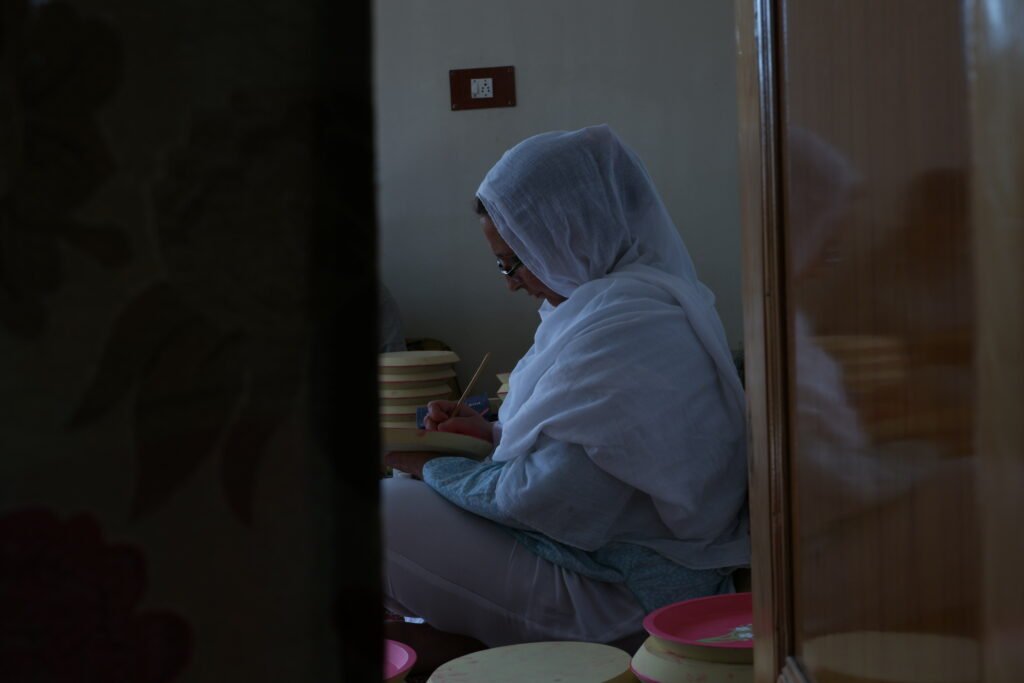
“To be honest no one wants to take it as a profession nowadays because artisans are paid meager wages for pain tasking as well as time-consuming work,” she says. “I somehow managed to get at least two dozen females of my own and I also believe that figure is not enough to revive the dying art,” she says.
Jan continued adding the the Jammu and Kashmir government need to act and introduce Papier Mache as a separate subject in colleges as well as schools.
Mehmood Ahmad Shah, Director of Kashmir Handicrafts and Handloom sector, in a brief conversation, said that his department had introduced a policy in 2020 for the welfare of the handicraft sector and the artisans of the valley. The authorities have helped form 2500 societies and provided financial assistance to the artisans. “The scheme will provide fresh impetus to the craft industry, especially to the languishing crafts. In a bid to upscale their learning techniques, improve their earnings and inculcate entrepreneurship qualities in them,” Shah said.
“I am trying to train a few more women who can earn and support their families independently and similarly I believe government should provide a good package to veteran artists so that they can pass on their skills to a new generation.”
Masrat Jan
Kashmir and its handicrafts
The Jammu and Kashmir government has launched the Karkhandar scheme for the development of the craft sector in the region wherein the artisans’ workplaces are declared as ‘Karkhandar‘. “The scheme will provide fresh impetus to the craft industry, especially to the languishing crafts,” he said.
He said that they have given financial assistance of 16 crores to these societies which includes all the crafts like papier mache. “We have provided a 10% incentive on the export of G.I certified products and are in the process of giving a rent-free stall to G.I certified users,” Shah said.
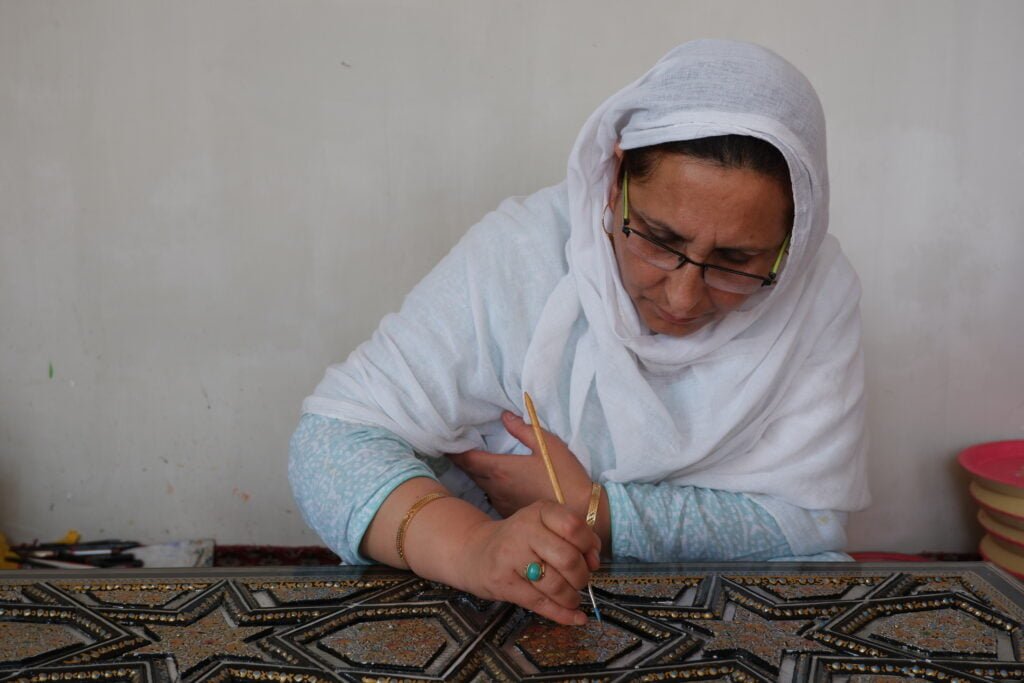
“On the marketing front, we have conducted a record number of exhibitions, only this year we have organized 12 exhibitions, there is a considerable degree of thirst for the exhibitions so artisan sells their merchandise. From October this month, we are planning to hold many exhibitions in and outside for artisans.”
However, the efforts don’t seem to have brought much cheer to the artisans.
“I am ready to do my bit but will the government also take the Papier Mache sector seriously?“
Masrat Jan
Amjid Ahmed Bhat, a Papier mache dealer from the Zadibal area of Srinagar, said that many families left making of papier mache goods due to a lack of demand in the market. “No young generation wants to be part of this art form as it takes a toll on health and income isn’t enough.”
“Around 70 percent of artisans left this craft, as the government’s financial assistance to the artisans was minuscule,” he says.
Also read: Women In Kashmir And The Uphill Path Of Feminising Development
Jan says that the government was not putting much effort to revive the Papier Mache industry which should inspire hundreds of women to pick up the trade.
“I am trying to train a few more women who can earn and support their families independently and similarly I believe government should provide a good package to veteran artists so that they can pass on their skills to a new generation,” she says.
“I am ready to do my bit but will the government also take the Papier Mache sector seriously?” Jan questions. “If that happens we may witness a turnaround in the handicrafts sector.”
All images are provided by the author.


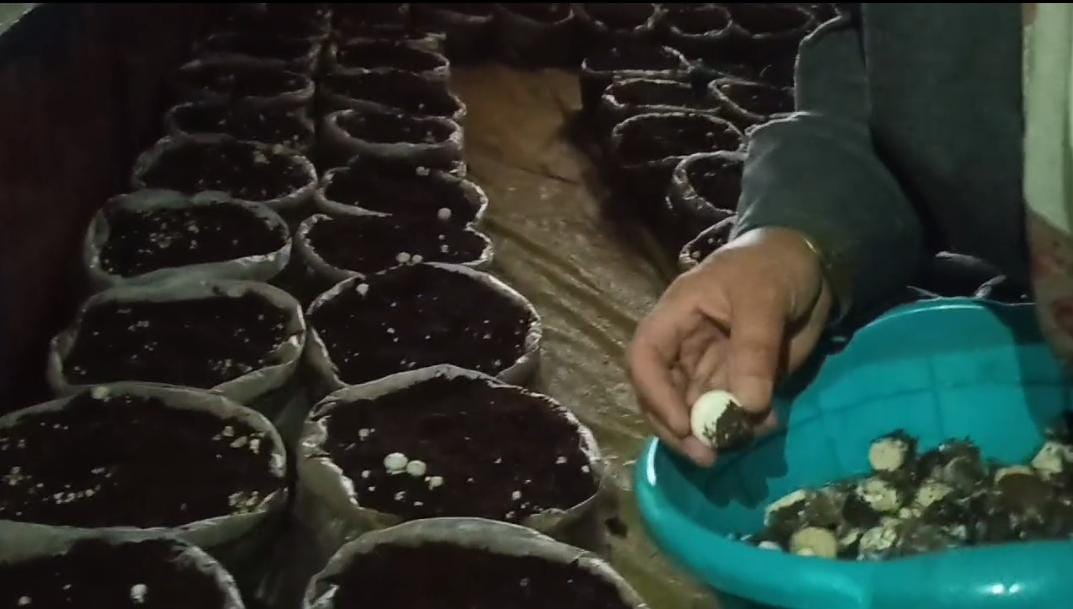
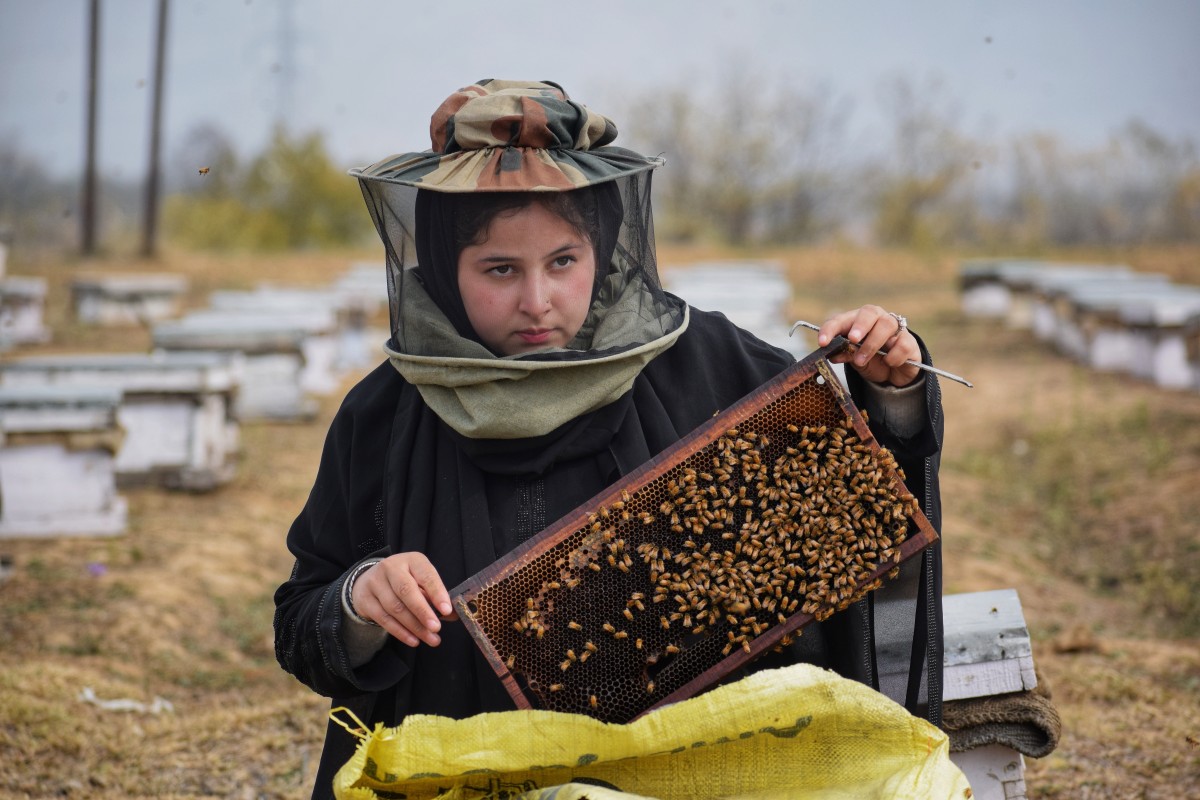

The richly-detailed story is a demanding read. Would love to read more about Kashmir craft.